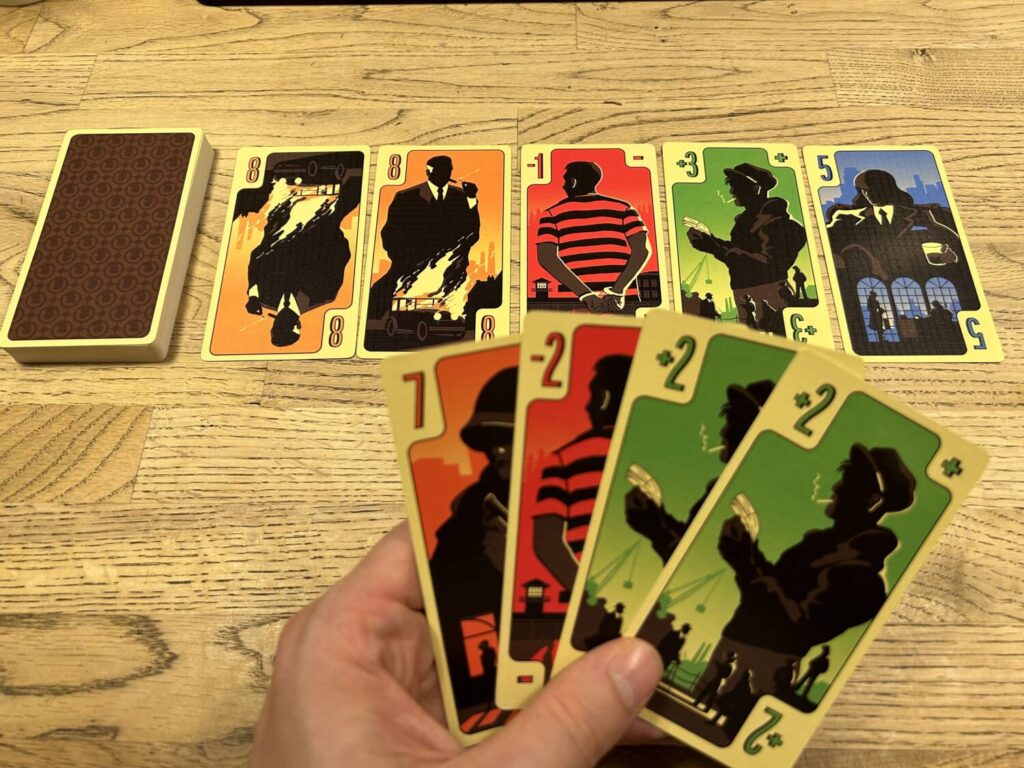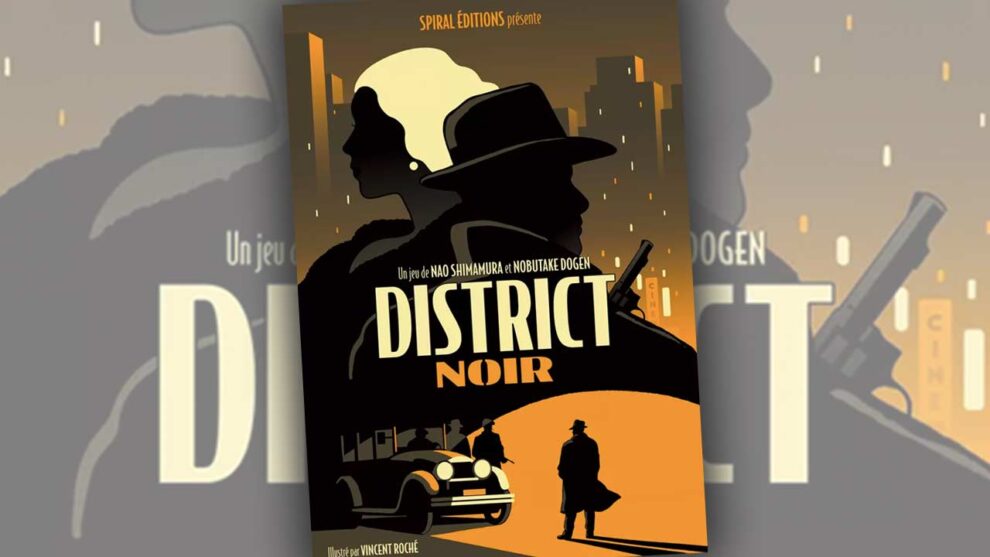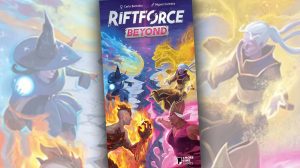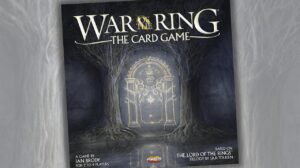Disclosure: Meeple Mountain received a free copy of this product in exchange for an honest, unbiased review. This review is not intended to be an endorsement.
In February of this year, Pandasaurus Games announced a new edition of the Japanese card game Throne and the Grail. It has a new title, District Noir, and a new setting. Nobutake Dogen and Nao Shimamura’s design now takes place in a criminal underworld straight out of The Maltese Falcon.
I didn’t know the game, but I was immediately hooked. Not only do I love quick two-player games and card games, I am particularly fond of Japanese card games. Japanese designs have an indescribable and unique feel to them. If they aren’t always necessarily the best games, they’re always worth experiencing, so I get excited whenever a new one makes the leap across the Pacific.
The press release mentioned that a Board Game Arena implementation was already available, so I hopped online to play a few games. They went poorly. I got trounced. Turns out District Noir had, at that time, been out for about a year in France, and there were experienced sharks swimming in those waters. It didn’t matter. For the next three or four days, I thought only of District Noir.
Things’ll Be Great When You’re Downtown
What a strange mix of push-your-luck and set collection this is. Each player starts each of the four rounds with five cards in hand. On your turn, you either play one card from your hand to the row in the middle of the table, which you will do five times during the round, or you take the five most recently played cards in the row, which you can only do once. Most of the cards are either part of a numbered suit between 5 and 8, or from the green and red suits. These cards score differently.
The numbered cards are a majority contest. Each suit exists in a quantity that matches its value. To put that in plain English, there are five 5’s, six 6’s, seven 7’s and eight 8’s. If, at the end of the game, I have three of the 5 cards and you have two, I score five points. Complete sets across the four suits also score points. The green and red cards are simpler still. They’re worth the number of positive or negative points shown on the card.
There’s a third suit, and it’s a source of wondrous tension, right up until it isn’t. There are three City cards in the deck. If either player manages to claim all three, they immediately win the game. If that doesn’t happen, the game ends after the fourth round, and both players add up their scores.

Strange Fascination, Fascinating Me
District Noir is fine. I love it. I’m not sure to what extent you can play with intentionality. There are moments when you can pull off terrific moves. You can add a card that you know sweetens the pot just right for your opponent, baiting them to take it, leaving you to pick up the better cards in your hand. You can play like you’ve got a great hand of cards, encouraging your opponent to wait, only to fill up the market with enough garbage to take their sets. Other times, though, you’re just kind of…there. District Noir isn’t random, but I’m not sure it’s intentional either. Except for when it is. And when it is, it’s great.
It reminds me, in some strange way, of Reiner Knizia’s much-maligned Medici vs. Strozzi, another impermeable two player game that is poorly regarded and of which I cannot possibly get enough. With the right opponent, it’s magical. The key with both games, I think, is to not take everything so seriously.
The City cards are a source of fascination. You cannot let your opponent get two of them. If you do, you will live the rest of the game in fear, unless you have mathed out that you are in exactly the right turn position. But if your opponent knows that you’ve mathed that out, they can play accordingly. It’s possible to play an entire game of District Noir without anything popping. It’s also possible to play a game where every single card play feels like the thrust of a dagger. It’s such an interesting, unsolveable, bizarre design. I love it. I love it so much.

***
A brief epilogue: After a few months away, I returned to District Noir and found that, unless the City Cards were in play, the game easily falls flat. The scoring is a little too impenetrable without that instant bit of tension thrown in. My love affair with District Noir, it turned out, was a brief one.












Add Comment